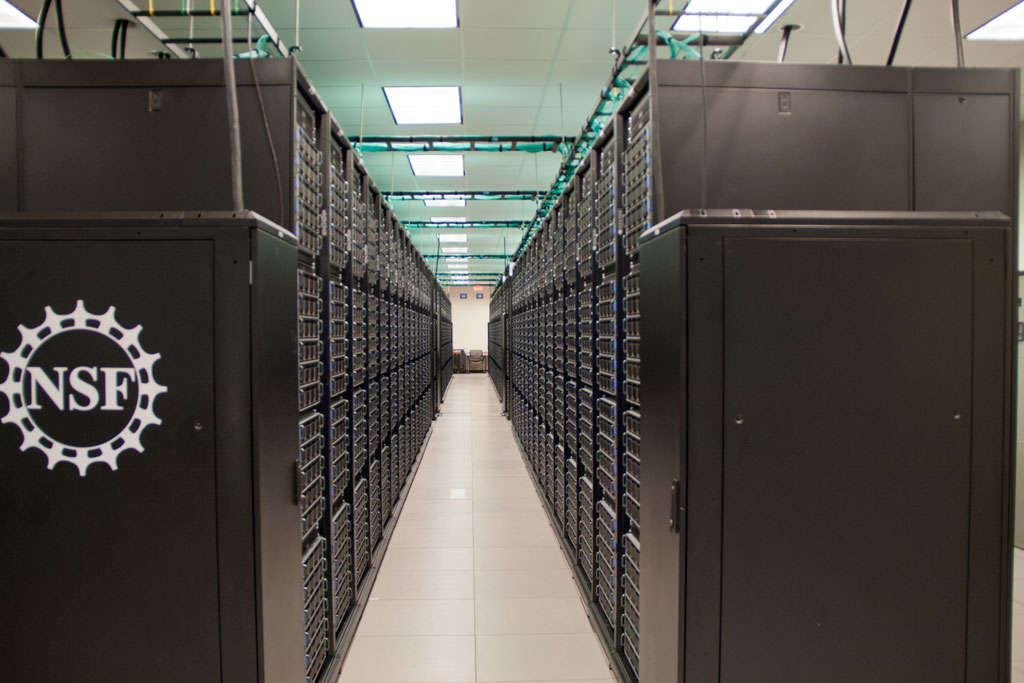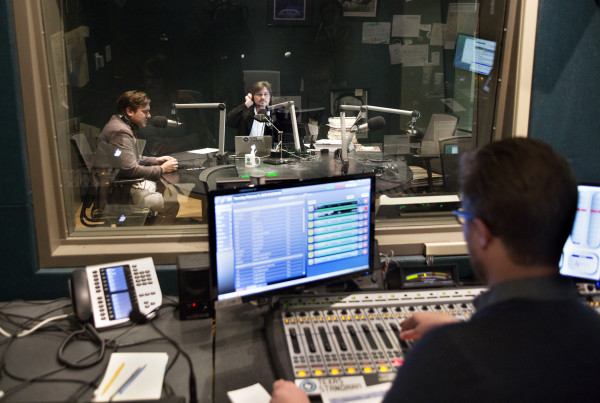Last week, the University of Texas at Austin unveiled Frontera, the most powerful supercomputer at any university, and the fifth most powerful computer in the world. The machine, which cost $60 million to build, is the latest supercomputer in UT’s research arsenal.
Dan Stanzione is executive director of the Texas Advanced Computing Center, or TACC – Frontera’s home. Frontera sits right next to the former fastest university supercomputer in the world, Stampede 2.
“[Frontera is] the largest general-purpose computer that’s ever existed, and it’s here to support scientists in solving some of the largest scientific challenges and engineering challenges that are out there,” Stanzione says.
TACC won the chance to host Frontera after a National Science Foundation competition to build it. The award came with a $120 million from the foundation – $60 million to build it and another $60 million to run and maintain it. A select few foundation-backed research projects will be chosen to access Frontera each year; between 50 and 100 projects will benefit annually.
Stanzione says scientists working in fields as diverse as climate research, astrophysics and materials science will run projects on the supercomputer.
“We have users doing quantum chemistry experiments,” Stanzione says. “We have users working on machine-learning techniques to do better drug screening for particular diseases, looking at the molecular level: how medications might bind to molecules in your body or in diseases.”
Frontera’s power and size mean it can attack the most complex scientific problems.
“This machine does about eight or nine times as much work per node or per dollar, and about five times as much work per watt as the older machines,” Stanzione says.
Omar Ghattas is the chief scientist for Frontera, and a professor of geosciences and mechanical engineering at UT-Austin. He says that though 80% of Frontera’s computation time will be devoted to National Science Foundation-backed research, UT scientists and students will have a chance to use the system, too.
“There’s also the halo effect of having the most powerful supercomputer at any university in the world sitting here at the university. It brings this sort of aura of supercomputing all across campus. It touches everyone,” Ghattas says.
Ghattas says increased supercomputer performance helps researchers build better models to test their theories. Weather is a good example.
“If you combine the acceleration of supercomputing performance with the explosive growth of data, and you combine that with better models themselves, the net effect is that a five-day forecast today is as good as a one-day forecast was in the ’60s,” he says.
As Hurricane Dorian bore down on the Bahamas last week, Frontera was modeling the storm’s growth.
Though Frontera is brand-new, Ghattas says that in five years, a new supercomputer that’s 10 times faster will replace it.















